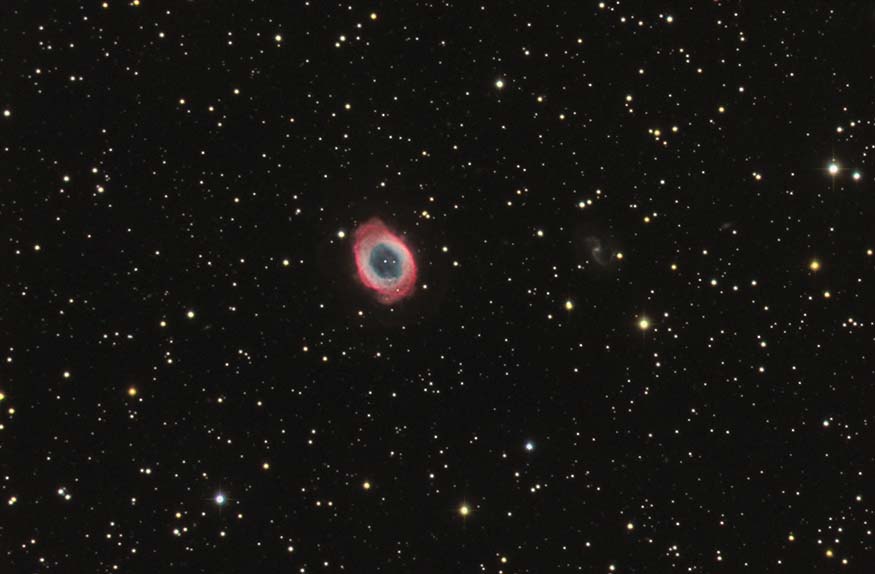
BEAUTY: 
BRAGGING RIGHTS: A beautiful sight
HOW EASY IS IT TO SEE? Best with a small telescope
BEST TIME TO SEE IT: Summer (in Lyra)
TYPE: Planetary Nebula
DISCOVERED: 1779 by Antoine Darquier de Pellepoix
The Ring Nebula is one of the first sights I ever saw with my telescope. Using my well-thumbed copy of The Field Guide to the Stars and Planets, I pointed my telescope at Vega and then moved from star to star. Soon, a beautiful, ghostly smoke ring drifted into view—right where it was supposed to be. The sky charts were like a key to a secret world.
Without catalogs and charts to guide us we would never find the wonders of the night sky. But who created the catalogs? How did they find all those beautiful objects in the sky? The most famous list of interesting objects is the Messier Catalog, compiled by Frenchman Charles Messier in the late 1700s. Ironically, he wasn’t interested in the objects at all—his goal was to make a list of objects to avoid.
Charles Messier was obsessed with comets—those awesome but unpredictable visitors in the sky. His tireless work to discover new comets earned him a job as Astronomer of the Navy and membership in the Royal Academy of Sciences in Paris. One day he stumbled on a faint glow in Taurus that looked like a comet. But it wasn’t. It never moved from its position. To avoid being fooled in the future, Messier began a catalog of fuzzy, comet-like objects. Messier 1, the Crab Nebula, was the first object. By the time he got to Messier 57, like-minded astronomers were sending him their own non-comet discoveries. Today, Messier’s list consists of 110 deep-sky objects, all within reach of amateur instruments, and they are well worth the effort to track down.
Smoke ring in Lyra. Look up in the sky in summer and you should see Vega—one of the brightest stars in the sky. Vega is part of a small triangle with two fainter stars. Attached to the triangle at one point is a parallelogram. Look at the short side of the parallelogram opposite Vega to find the Ring Nebula.
Magnify. Messier 57 is small and relatively bright. It should respond well to moderate magnification. Nevertheless, you might have to use averted vision to see more detail. You’ll notice that the ring is well-defined and distinctly oval. See if you can notice any detail. Are parts of the ring brighter than others?
Shroud of a Dead Star. Like the Dumbbell Nebula Messier 57 is a planetary nebula—the cast-off shell of a red giant after it collapsed and turned into a white dwarf. It helps to think of the Ring Nebula, not as a ring, but as a spherical shell.
CYGNUS REGION IN SUMMER; 30-DEGREE FIELD OF VIEW